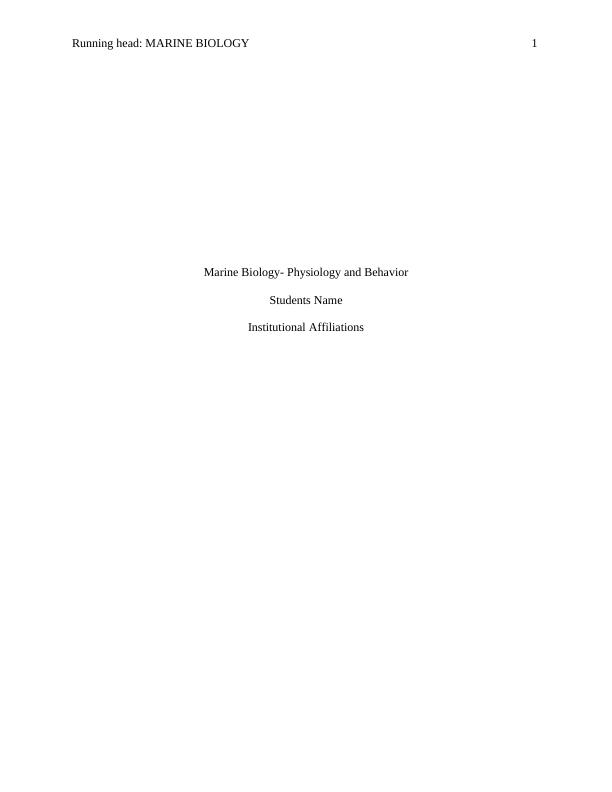Ask a question from expert
Marine Biology Assignment PDF
5 Pages1231 Words313 Views
Added on 2021-06-17
Marine Biology Assignment PDF
Added on 2021-06-17
BookmarkShareRelated Documents
Running head: MARINE BIOLOGY 1Marine Biology- Physiology and BehaviorStudents Name Institutional Affiliations

MARINE BIOLOGY 2Marine Biology- Physiology and Behavior1. Discuss the mechanisms used by animals to achieve neutral buoyancy.Neutral buoyancy refers to a condition whereby the average density of a physical body equalizes the fluid’s density it has been immersed. For aquatic animals to float or be buoyant, they have to displace the same amount of water or less as their body mass. One of the mechanisms used by the aquatic animals to be buoyant includes the use of swim bladder occupied with gas. This makes them heavier compared to the water they inhabit. Some like shark use good-sized liver filled with squalene oil to attain neutral buoyancy. Squalene is one of the natural compounds produced by the aquatic animals. It has a gravity of 0.86 and a low density, therefore, aids in buoyancy maintenance because it is less light compared to water. Another mechanism which the aquatic lives use to achieve neutral buoyancy is referred toas dynamic lift. The animals attain this through the use of the pectoral fins to establish a lift on their underneath making them buoyant. The caudal fins in fish also help to achieve neutral buoyancy by thrusting the animals to move in a frontward direction, keeping them move fast. A fourth mechanism which enables the animals to achieve neutral buoyancy is their cartilaginous structure. It is important to note that the aquatic animals such as fish do not have bones, instead have cartilages which are much lighter compared to bones. The cartilages make the animals moreagile and lighter, therefore, inhibiting them from sinking under their own weights. The cartilaginous structure, therefore, helps the animals to achieve neutral buoyancy. 2. Discuss the mechanisms used by animals to maintain salt and water balance.Most of the marine animals are osmoconformers while others are osmoregulators. The cartilaginous fish are isosmotic to the sea water since they have plasma. As such, the higher osmotic levels are retained through the high urea concentration in their respective bloodstream.

End of preview
Want to access all the pages? Upload your documents or become a member.